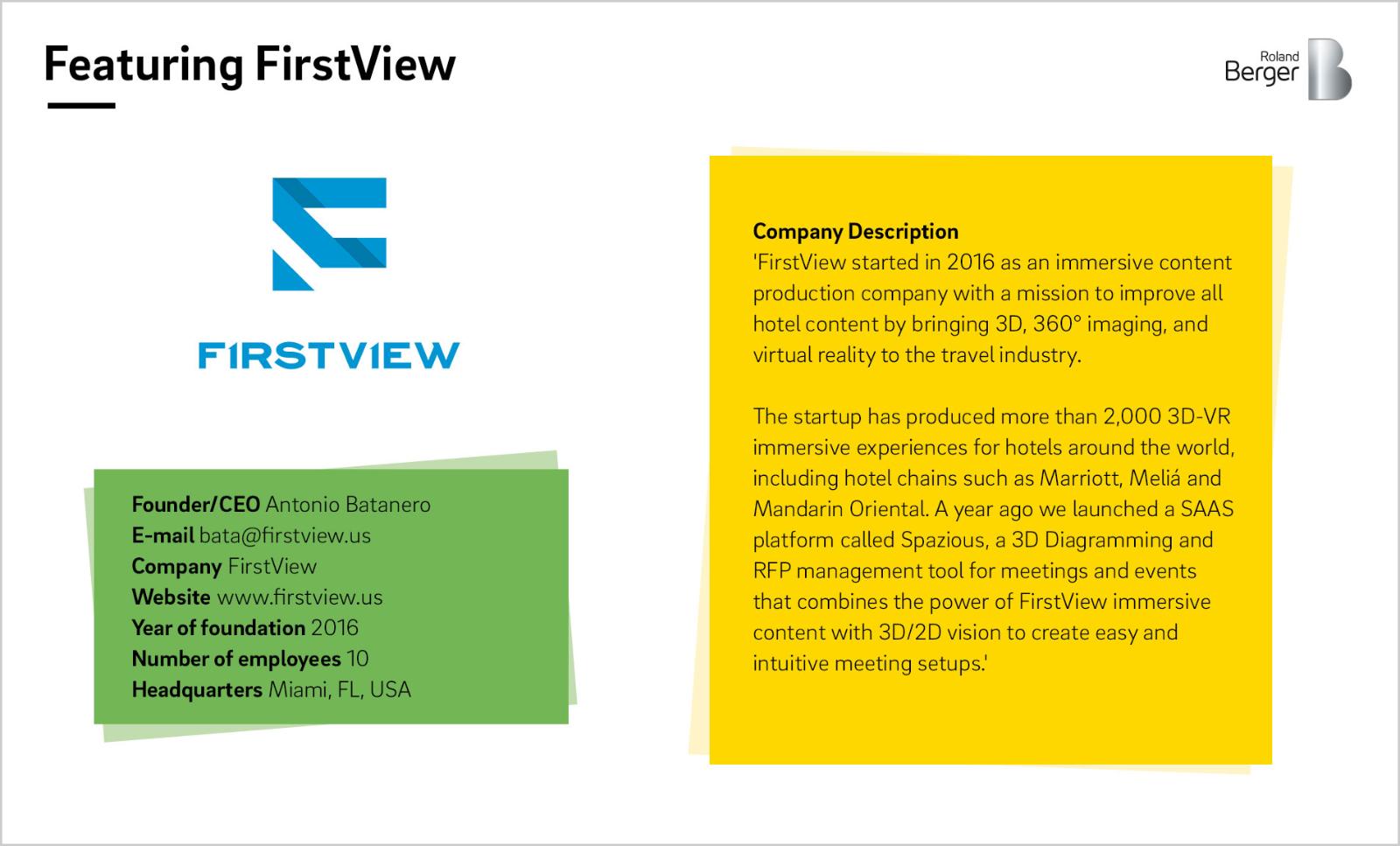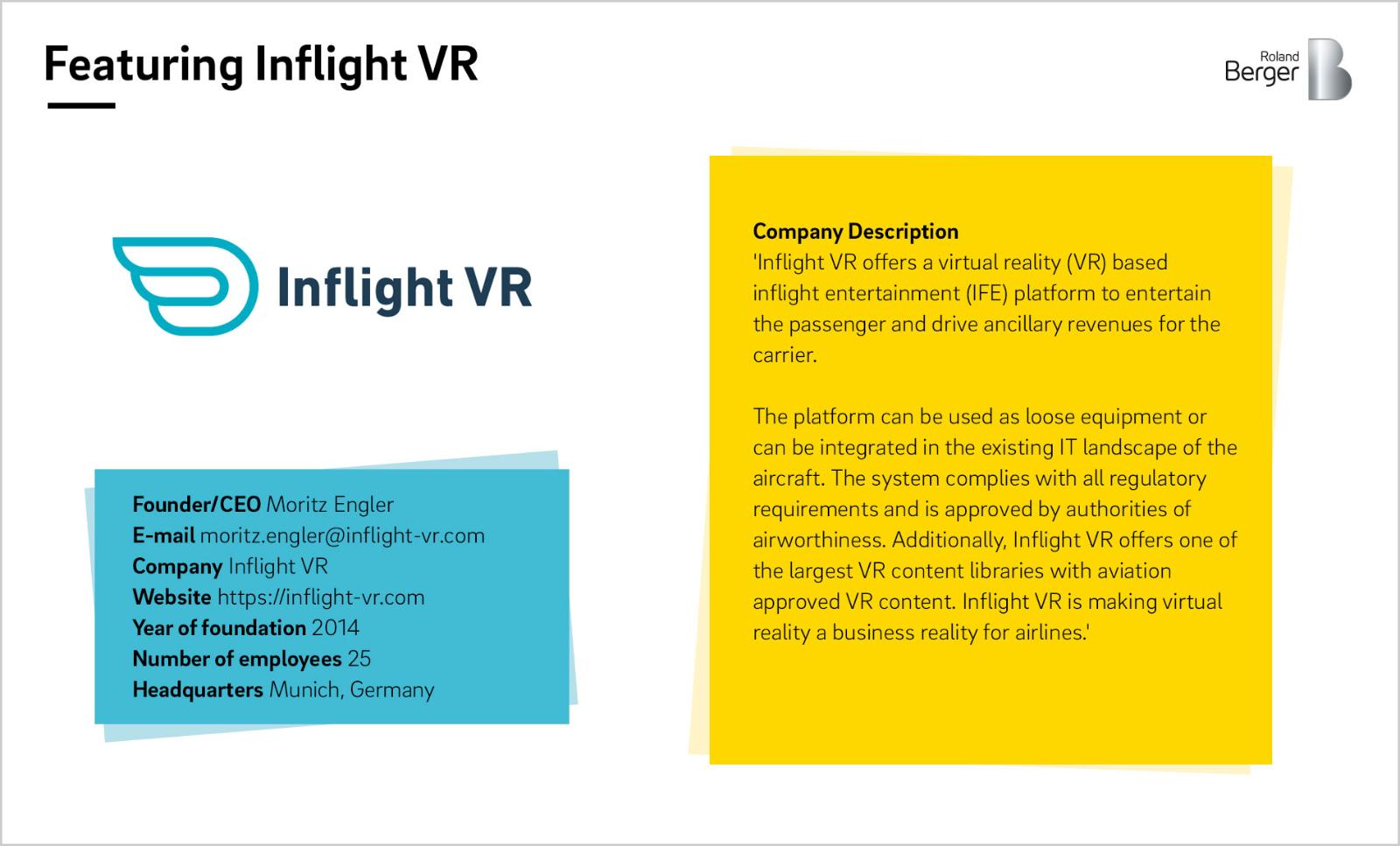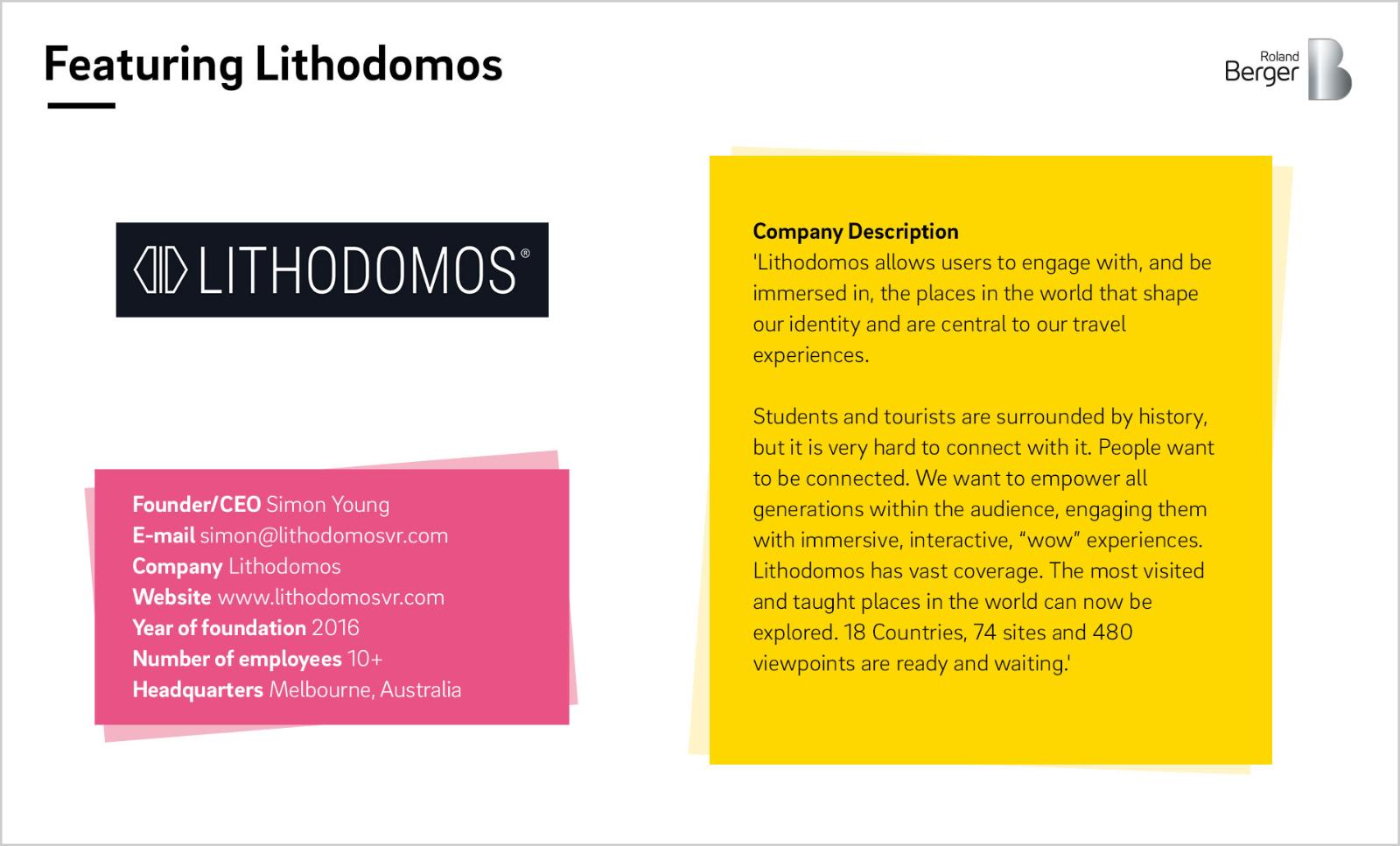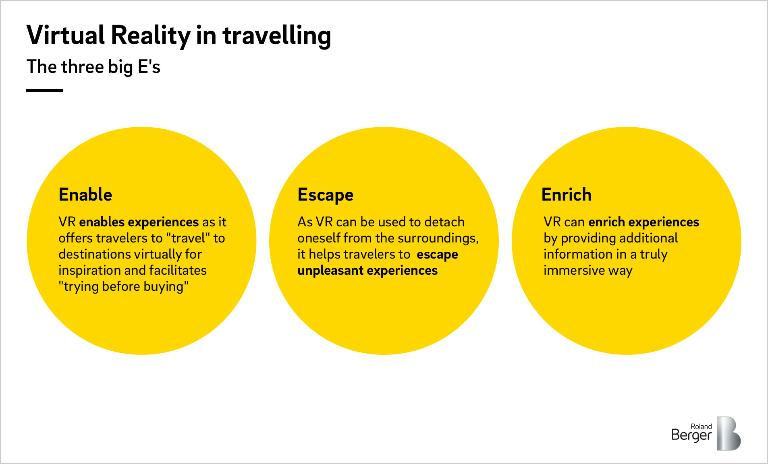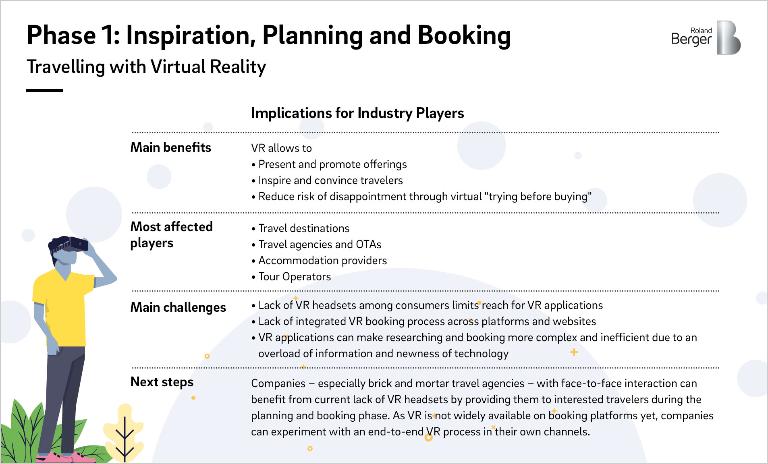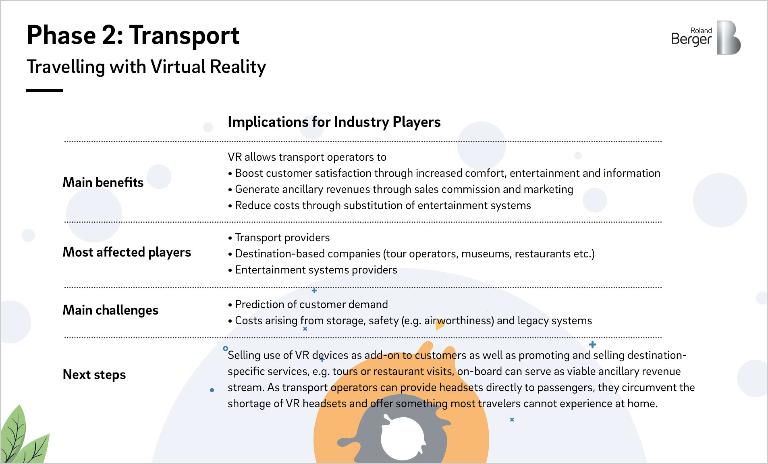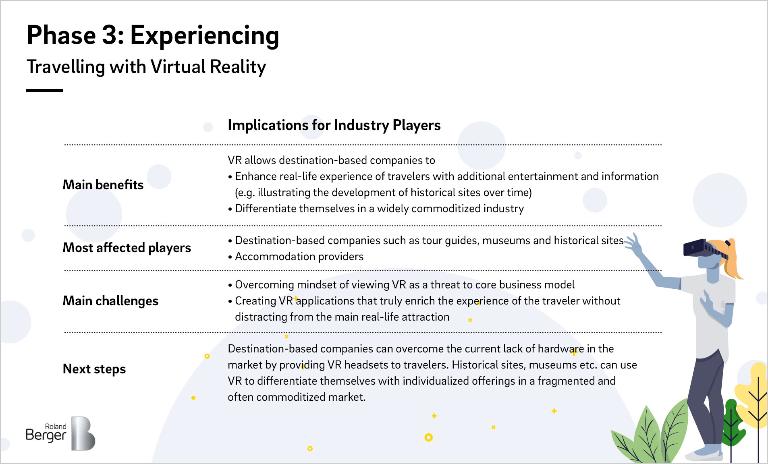

Virtual Reality – New reality for the travel industry?
Start-ups introduce various services along the travel value chain to the market
In recent years, technological and commercial developments around Virtual Reality (VR) have fueled speculations about its impact on numerous industries. More specifically, predictions on the repercussions of VR on the travel industry range from considering it a mere technological gimmick to perceiving VR as a threat that could potentially substitute traveling. Featuring three startups on the forefront of VR, this article sheds light on applications and limitations of VR in the travel sector and provides four guiding principles for industry players.

"The current VR landscape in the travel industry is emerging and fragmentated – it is not yet unified in any meaningful way. "
Status Quo of Virtual Reality
VR builds artificial environments, accessible through headsets. These provide immersive simulations through image, sound, and motion-tracking.
Despite the hype and optimistic sales projections, adoption has been relatively slow, mainly due to a lack of sufficient content, performance issues and high prices of VR devices. Therefore, reaching a large customer base remains a major challenge for content and software developers. Consequently, despite sufficient funding from investors, developing financially sustainable business models has been difficult for many companies in the VR sphere.
Virtual Reality in the Travel Sector
Despite current challenges, VR is still believed to significantly increase its impact on the travel industry, as it provides three overarching features for travelers: Enabling, Escaping and Enriching experiences:
"Travel companies are now realizing that they need to apply the digital transformation not just to their tools and processes, but to the content as well."
Whereas these three features can individually accompany both travelers and companies in all steps of the customer journey, they tend to create the greatest benefits in a specific phase as illustrated in the following:
Customer Journey Phase 1 – Inspiration, Planning and Booking
As travelers are not able to try travel experiences before their purchases, they often seek to gather as much information as possible to reduce potential disappointment and find offers suited to their individual prospects. Moreover, as the world is more connected than ever before, people face the paradox of countless ─ often overcrowded ─ travel destinations and a wide range of attractive, yet unknown destinations.
As VR enables experiences, travelers can use this technology for inspiration of new destinations and plan ahead to reduce risk of disappointment through (virtual) "trying before buying".
"We help companies to benefit from VR via enhancing their brand, building a closer customer relationship or through ancillary revenue."
Customer Journey Phase 2 – Transport
Transport to and from the destination, especially on long-haul trips, is often considered the least favorite part of travelling due to discomfort, boredom or stress. In this context, the second feature of VR, escaping experiences, comes into play.
VR can be used by transport operators, e.g. in airplanes, coaches, and trains, to improve customer experience by allowing travelers to detach themselves from their surroundings through entertainment and information.
"We seek to contextualize travelers’ experiences in order to enhance their connection with their destinations."
Customer Journey Phase 3 – Experiencing
Once travelers have arrived at the destination, VR can enrich their experiences. Hotels, for example, can increase their service levels by displaying relevant information on the available facilities, excursions and surroundings. Most important, agents such as tour operators, museums and historical sites are able to ameliorate their offerings by incorporating VR technology to add entertainment and information to their services.
4 Principles to Build Your VR Experience
Despite its recent prominence, VR has not yet been able to show its full potential of significantly altering the travel industry or even substituting travelling. From today's perspective, we consider VR a natural evolution of content that, if applied correctly, can increase customer satisfaction and corporate performance. Before jumping on the bandwagon and investing in VR, travel industry players would benefit from considering the following four principles:
Co-authors: Stephan Hundertmark , Rafael Geisler , Claus Hoening
Featured start-ups: www.firstview.us , www.inflight-vr.com , www.lithodomosvr.com

